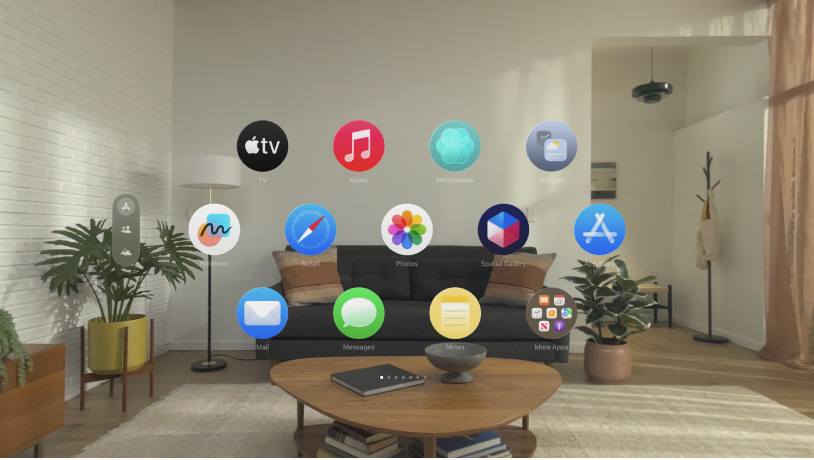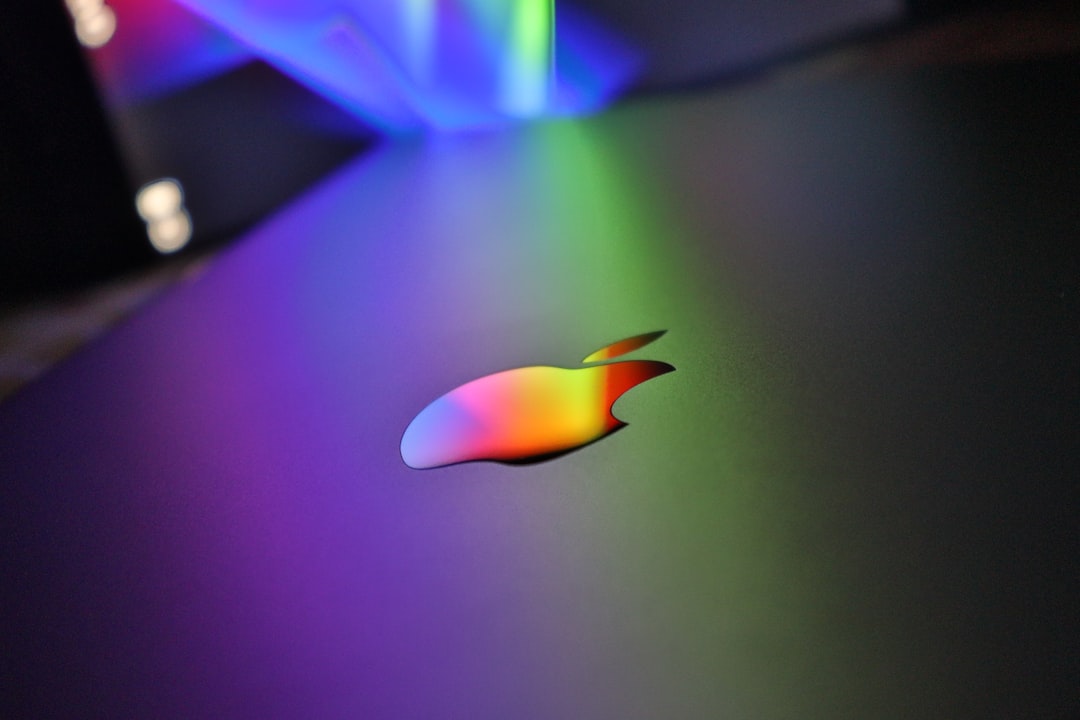The Genesis of Vision Pro Wand Rumors: Beyond Hands-Free Interaction
Apple’s Vision Pro has fundamentally redefined human-computer interaction, launching a new era of spatial computing powered by an incredibly intuitive eye and hand-tracking system. The ability to navigate, select, and manipulate digital content with a simple glance and a pinch feels like science fiction made real. This controller-free approach is central to Apple’s philosophy of making technology feel natural and invisible. Yet, amidst the wave of positive Apple Vision Pro news, a compelling new conversation is emerging within the developer and enthusiast communities: the potential for a dedicated physical controller, a device colloquially dubbed the “Apple Wand.”
This surge in Vision Pro wand news isn’t about replacing the current system but augmenting it. While hand tracking is revolutionary for general navigation and media consumption, power users, creative professionals, and gamers are beginning to identify scenarios where the precision, tactile feedback, and sustained input of a physical device would be transformative. The discussion mirrors historical trends in the Apple ecosystem news; just as the revolutionary multi-touch on the iPhone was later supplemented by the Apple Pencil for the iPad, a wand could serve as the precision tool for the next generation of spatial computing. This article delves into the technical arguments, potential use cases, and strategic implications of Apple potentially developing a wand accessory for the Vision Pro.
The Limits of Pure Hand Tracking
For all its magic, a purely hands-free interface has inherent limitations. Users can sometimes experience the “Midas touch” effect, where an accidental gesture leads to an unintended action. More importantly, complex tasks requiring sustained physical feedback—like the tension of drawing a bowstring in a game, the subtle resistance of sculpting digital clay, or the precise click of a button in a complex application—are difficult to replicate with air gestures alone. There is no haptic confirmation, no physical anchor for your actions. This is the gap a purpose-built accessory could fill, offering a bridge between the digital and physical worlds that hand tracking alone cannot span.
Drawing Parallels: From iPod Click Wheel to Apple Pencil
Apple has a long history of perfecting input methods. The journey from the original iPod’s physical buttons to the elegant iPod Click Wheel is a classic example. This wasn’t just an interface change; it redefined how millions managed their music libraries. We saw this again with the iPhone and iPad. While touch is the primary input, the introduction of the Apple Pencil unlocked a new dimension of creativity and productivity, leading to a wealth of iPad vision board news and professional art applications. A Vision Pro wand would follow this exact playbook. It wouldn’t be a mandatory component but an optional, pro-grade tool that unlocks deeper functionality, much like the latest Apple Pencil Vision Pro news hints at for future creative integrations. This strategy allows the core product to remain simple and accessible while providing a higher ceiling for those who need it.
Anatomy of a Spatial Controller: A Technical Deep Dive into the “Apple Wand”
If Apple were to create a wand for the Vision Pro, it would undoubtedly be a marvel of industrial design and engineering, far removed from the bulky plastic controllers of other VR systems. Imagining its specifications requires looking at Apple’s existing technology portfolio, from the haptics in the Apple Watch to the precision sensors in AirPods. This is not just an accessory; it would be a core part of the expanding Vision Pro accessories news landscape.

Haptic Feedback Reimagined with a Taptic Engine
The cornerstone of a compelling physical controller is its haptic feedback. Apple’s Taptic Engine, a feature that provides nuanced feedback in everything from the latest iPhone news to Apple Watch news, would be central. A Vision Pro wand could feature an advanced, multi-zone Taptic Engine capable of producing incredibly sophisticated effects. Imagine feeling the subtle click of a virtual dial, the texture of a digital fabric, or the impact of a virtual sword strike with uncanny realism. It could simulate inertia and weight, making virtual objects feel more substantial. This level of tactile feedback is crucial for immersion in gaming and for providing confidence and accuracy in professional design applications.
Precision Tracking and Seamless Input
For a wand to be a true “pro” accessory, its tracking must be flawless. It would likely incorporate a suite of sensors, including an accelerometer and gyroscope, for orientation. For absolute position tracking within a room, Apple could leverage the Vision Pro’s own sensor array or even employ Ultra-Wideband (UWB) technology, the same tech that powers AirTag’s Precision Finding. This would ensure sub-millimeter accuracy with near-zero latency. The input mechanisms would be quintessentially Apple: perhaps a seamless, capacitive touch surface for scrolling and gestures, similar to the latest Siri Remote discussed in Apple TV marketing news, combined with a few discreet, pressure-sensitive buttons for primary actions. There might even be integration with Siri, building on recent Siri news to allow for voice-activated tool switching.
Deep Integration with the Apple Ecosystem
An Apple Wand would not exist in a vacuum. Its true power would be its deep integration across the entire Apple ecosystem. It could function as a presentation clicker for Keynote running on a Mac virtual display, a precision pointer for editing 4K video in Final Cut Pro, or even a simple remote for your HomePod mini. The charging mechanism would likely be elegant, perhaps magnetically attaching to the side of the Vision Pro or a dedicated stand, using the same USB-C standard seen in recent iPad news. This seamless connectivity and shared design language is a hallmark of Apple’s strategy, ensuring that new hardware enhances the value of the entire ecosystem, a constant theme in all Apple accessories news.
Redefining Interaction: How a Wand Could Transform the Vision Pro Experience
The introduction of a precision physical controller would be more than an incremental update; it would catalyze new categories of applications and experiences on visionOS, fundamentally expanding the platform’s appeal to new markets. The implications would be felt across gaming, professional industries, and even daily usability.
For Gamers: The Missing Piece for Immersive AR Gaming
The most immediate and obvious impact would be on gaming. While casual games work well with hand tracking, many popular genres are nearly impossible to implement effectively without a physical controller. A wand would unlock:
- First-Person Shooters (FPS): Providing a stable aiming mechanism and a physical trigger for shooting is non-negotiable for this genre.
- Sword-Fighting and Melee Combat: The haptic feedback of a parry, the weight of a swing, and the certainty of a physical grip would create a visceral experience that air gestures cannot match.
- Complex Strategy Games: High-precision pointing and clicking for selecting units and navigating intricate menus would become effortless.
)
For Professionals: The Ultimate Creative and Surgical Tool
Beyond gaming, a wand would be a game-changer for professionals. Consider these real-world scenarios:
- 3D Design and Modeling: An architect or product designer could use the wand like a digital scalpel, sculpting and manipulating 3D models with a level of dexterity that mimics working with physical clay.
- Medical Training and Simulation: A surgeon could practice complex procedures in a hyper-realistic simulation, with the wand providing haptic feedback that mimics the resistance of human tissue. This application aligns perfectly with the ongoing focus on Apple health news.
- Data Visualization: An analyst could physically reach into complex 3D data charts, grabbing and isolating data points with the wand for deeper inspection.
The Philosophical Debate: Purity vs. Pragmatism in Spatial Computing
The decision to introduce a physical controller is not just a technical one; it’s a philosophical one that cuts to the core of Apple’s design ethos. It would force a conversation about the future of human-computer interaction and the balance between a purely intuitive interface and the pragmatic need for specialized tools.
The Argument for a Controller-Free Future

Apple’s primary vision for the Vision Pro is a world without controllers, where the technology melts away, leaving only the experience. A physical wand could be seen as a step backward—a concession that the hands-free dream isn’t sufficient on its own. It introduces another piece of hardware to buy, charge, and potentially lose. Furthermore, it could lead to fragmentation for developers, who would need to design their apps to work seamlessly with both hand-tracking and a physical wand. This is a significant consideration, often discussed in relation to major iOS updates news, where maintaining a consistent user experience is paramount. Apple’s commitment to user privacy and security, a cornerstone of Apple privacy news, would also need to be extended to this new data input device, ensuring its sensor data is handled with the utmost care, a key topic in all iOS security news.
The Case for a Hybrid, Pro-Oriented Approach
The more compelling argument is that a wand is not a retreat but an expansion. It doesn’t replace hand tracking; it complements it. The core visionOS experience would remain hands-free, preserving the magic for everyday use. The wand would be positioned as an optional accessory for “pro” users, much like a high-end graphics tablet for a designer or a flight stick for a simulation enthusiast. This hybrid approach allows Apple to have its cake and eat it too: a simple, elegant base experience for everyone, with a pathway to unparalleled power and precision for those who need it. This strategy has proven successful time and again, from the original iPod to the latest AirPods Pro, and would be a logical next step in the evolution of spatial computing.
Conclusion: Forging the Future of Spatial Interaction
The current buzz surrounding Vision Pro wand news highlights a critical inflection point in the journey of spatial computing. While Apple’s achievement with controller-free interaction on the Vision Pro is a landmark in user interface design, the platform’s ultimate potential may only be fully realized by embracing a hybrid input model. A precision wand accessory would not undermine the core experience but would instead unlock new verticals in high-fidelity gaming, professional design, and specialized training, significantly broadening the device’s appeal and utility.
By following its own proven playbook—establishing a revolutionary new paradigm and then augmenting it with powerful, optional tools for professionals—Apple could solidify the Vision Pro’s position as the undisputed leader in the next wave of personal computing. Whether a physical wand materializes remains speculation, but the strategic and practical arguments for its existence are overwhelmingly strong. It represents the next logical step in providing users with the most powerful and intuitive tools to create, work, and play in the spatial realm.











